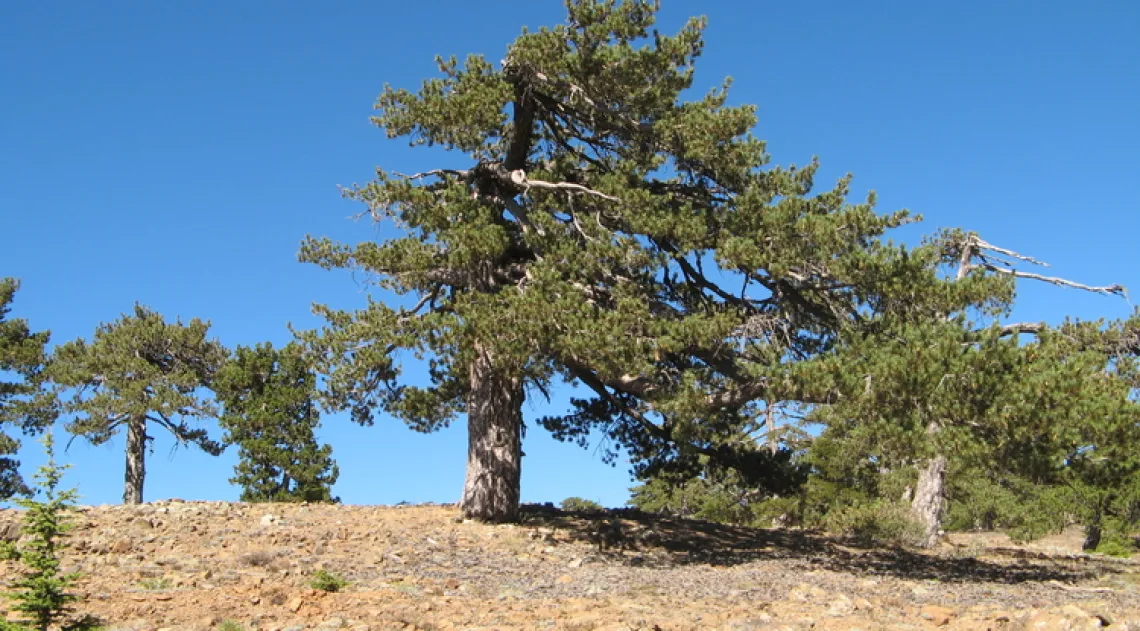Drought in Eastern Mediterranean Worst of Past 900 Years


Drought in Eastern Mediterranean Worst of Past 900 Years
Studies from the UA Laboratory of Tree-Ring Research prove crucial to recognizing the drought's severity.
The recent drought that began in 1998 in the eastern Mediterranean’s Levant region is likely the worst drought of the past nine centuries, according to new research from a team that includes three University of Arizona scientists. The Levant comprises Cyprus, Israel, Jordan, Lebanon, Palestine and Syria.
In addition to identifying the driest years, the researchers discovered patterns in the geographic distribution of droughts in the Mediterranean. The new work contradicts previous research that suggested when the eastern Mediterranean was dry, the western Mediterranean was wet — and vice versa.
"Our work definitely shows that when there’s drought in the eastern Mediterranean there’s also drought in the western Mediterranean," said co-author Kevin Anchukaitis, an associate professor in the UA School of Geography and Development and in the UA Department of Geosciences. "And when it’s wet in one part of the region, it’s wet all over."
Knowing the range of natural variation in the occurrence of droughts in the Mediterranean will let scientists identify droughts that are made worse by human-induced global warming. The research is part of NASA's ongoing work to improve the computer models that simulate climate now and in the future.
"To understand drought in the region, we have to understand the patterns," Anchukaitis said. "We have a very large network of tree-ring chronologies stretching from Morocco to Turkey and from Spain to Syria. They allow us to identify simultaneous moisture deficits in a way that can’t be done without this precision."
The researchers reconstructed the Mediterranean’s drought history by studying the annual rings of trees, which are thin in dry years and thick in years when water is plentiful.
To better understand how severe and how frequent Mediterranean droughts have been in the past, the researchers used the Old World Drought Atlas. The atlas is a compilation of records of tree rings from trees both living and dead from all over the region, including northern Africa, Greece, Lebanon, Jordan, Syria and Turkey.
The vast majority of the tree-ring data from the region was collected over the years by UA co-authors Ramzi Touchanand David Meko and their collaborators, Anchukaitis said. Both Touchan and Meko are research professors of dendrochronology at the UA Laboratory of Tree-Ring Research.
"This analysis is only possible because of Ramzi’s long work in the region," Anchukaitis said.
By combining those data with existing tree-ring records from Spain, southern France and Italy, the researchers reconstructed patterns of drought geographically and through time over the past millennium.
The team’s paper, "Spatiotemporal drought variability in the Mediterranean over the last 900 years," is publishedonline in the Journal of Geophysical Research-Atmospheres, a publication of the American Geophysical Union.
Additional authors are lead author Benjamin Cook of NASA Goddard Institute for Space Studies in New York City and Lamont-Doherty Earth Observatory in Palisades, New York, and Edward Cook, also of Lamont-Doherty Earth Observatory.
The National Science Foundation, the National Oceanic and Atmospheric Administration, and NASA funded the research.
"The magnitude and significance of human climate change requires us to really understand the full range of natural climate variability," Benjamin Cook said.
"If we look at recent events and we start to see anomalies that are outside this range of natural variability, then we can say with some confidence that it looks like this particular event or this series of events had some kind of human-caused climate change contribution."
Between the years 1100 and 2012, the team found droughts in the tree-ring record that corresponded to those described in historical documents written at the time. According to Benjamin Cook, the range of how extreme wet or dry periods were is quite broad, but the recent drought in the Levant region, from 1998 to 2012, stands out as about 50 percent drier than the driest period in the past 500 years — and 10 to 20 percent drier than the worst drought of the past 900 years.
Having such a large area covered allowed the science team not only to see variations in time, but also geographic changes across the region.
"Both for modern society and certainly ancient civilizations, it means that if one region was suffering the consequences of the drought, those conditions are likely to exist throughout the Mediterranean basin," Anchukaitis said of the team's findings.
"So you have the potential for large-scale disruption of food systems as well as potential conflict over water resources."
In addition, the science team found that when the northern part of the Mediterranean — Greece, Italy, and the coasts of France and Spain — tended to be dry when eastern North Africa was wet, and vice versa. These east-west and north-south relationships helped the team understand the ocean and atmospheric conditions that lead to dry or wet periods in the first place.

